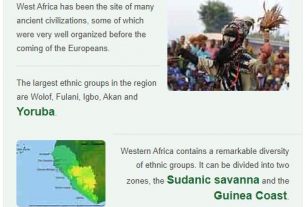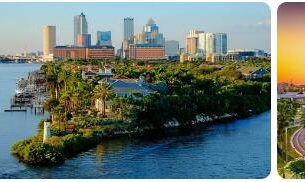Geography of Howard County, Arkansas
Howard County, situated in the southwestern part of the state of Arkansas, is a region characterized by its diverse topography, rich natural resources, and scenic beauty. Spanning an area of approximately 595 square miles, Howard County is known for its rolling hills, lush forests, winding rivers, and tranquil lakes.
Location and Borders
According to Polyhobbies, Howard County is located in the southwestern region of Arkansas, bordered by several other counties. To the north, it is bordered by Polk County, to the east by Pike County, to the south by Hempstead County, and to the west by Sevier County. The county seat is Nashville, while other significant communities include Dierks, Mineral Springs, and Tollette.
Topography and Terrain
The topography of Howard County is characterized by its rolling hills, wooded uplands, and fertile valleys. The county lies within the Ouachita Mountains region, a rugged and scenic area known for its diverse geology and outdoor recreation opportunities.
The landscape of Howard County is shaped by the Ouachita River and its tributaries, which have carved deep valleys and gorges into the surrounding terrain. The county is also home to several small streams, creeks, and springs, which provide water for agriculture, wildlife, and recreation.
In addition to its natural beauty, Howard County is known for its rich deposits of minerals and natural resources, including quartz crystals, bauxite, and timber. The county’s forests are dominated by hardwoods such as oak, hickory, and pine, which support a variety of wildlife species and provide habitat for hunting, fishing, and outdoor recreation.
Climate
Howard County experiences a humid subtropical climate, characterized by hot, humid summers and mild winters. The region’s climate is influenced by its location in the southern United States and its proximity to the Gulf of Mexico.
Summer temperatures in Howard County typically range from the 70s to 90s Fahrenheit (around 21-32°C), with occasional periods of extreme heat reaching into the 100s Fahrenheit (around 38°C). Humidity levels can be high during the summer months, making it feel warmer than the actual air temperature.
Winter temperatures are milder, with average highs in the 50s to 60s Fahrenheit (around 10-20°C) and lows in the 30s to 40s Fahrenheit (around 0-10°C). Snowfall is rare in Howard County, although light snow or ice may occur during winter storms.
Rivers and Waterways
Howard County is traversed by several rivers and waterways, which play a vital role in shaping the region’s landscape and providing habitat for wildlife. The most significant river in the county is the Little Missouri River, which flows from its headwaters in the Ouachita Mountains through the heart of Howard County.
Other notable rivers in Howard County include the Cossatot River, the Saline River, and the Ouachita River. These rivers and their tributaries provide opportunities for fishing, kayaking, canoeing, and other water-based activities.
Lakes and Reservoirs
While Howard County does not have any large natural lakes, the region is home to several reservoirs and man-made lakes that provide water for recreation, irrigation, and flood control. Notable lakes and reservoirs in the county include Lake Greeson, Lake Dierks, and Gillham Lake.
Lake Greeson, located on the Little Missouri River, is the largest lake in Howard County and a popular destination for fishing, boating, and water sports. The lake is surrounded by scenic forests and offers amenities such as boat ramps, campgrounds, and picnic areas.
Parks and Recreation Areas
Howard County is home to several parks, wildlife management areas, and recreational areas that showcase the region’s natural beauty and provide opportunities for outdoor adventure. Notable parks in the county include Daisy State Park, the Cossatot River State Park-Natural Area, and the Little Missouri Falls Recreation Area.
Daisy State Park, located on the shores of Lake Greeson, offers camping, fishing, hiking, and picnicking opportunities for visitors. The park also features a marina, boat ramps, and rental cabins for overnight stays.
The Cossatot River State Park-Natural Area, known for its rugged terrain and scenic beauty, is a popular destination for whitewater kayaking, hiking, and wildlife viewing. The park is home to the Cossatot River, which is renowned for its challenging rapids and pristine scenery.
Economy and Industry
The economy of Howard County is primarily based on agriculture, timber, manufacturing, and tourism. The region is known for its production of poultry, cattle, hay, and timber, which contribute to the local economy and provide employment opportunities for residents.
In addition to agriculture and timber, manufacturing is an important sector of the economy in Howard County, with industries such as food processing, lumber milling, and metal fabrication. The county is also home to several small businesses and retail establishments, which provide goods and services to local residents and visitors.
Tourism is an emerging industry in Howard County, with visitors drawn to the region’s natural beauty, outdoor recreation opportunities, and cultural heritage. Ecotourism, adventure travel, and heritage tourism are all growing sectors, with visitors exploring the county’s parks, rivers, lakes, and historic sites.
Conclusion
Howard County, Arkansas, is a region of scenic beauty, diverse landscapes, and rich natural resources. From its rolling hills and winding rivers to its tranquil lakes and dense forests, the county offers something for everyone to enjoy.
Whether exploring the trails of Daisy State Park, fishing in Lake Greeson, or kayaking the rapids of the Cossatot River, visitors to Howard County are sure to be captivated by its charm and hospitality. With its unique geography, vibrant culture, and abundant natural resources, Howard County is a hidden gem of the Natural State, inviting travelers to discover its wonders and create lasting memories.


